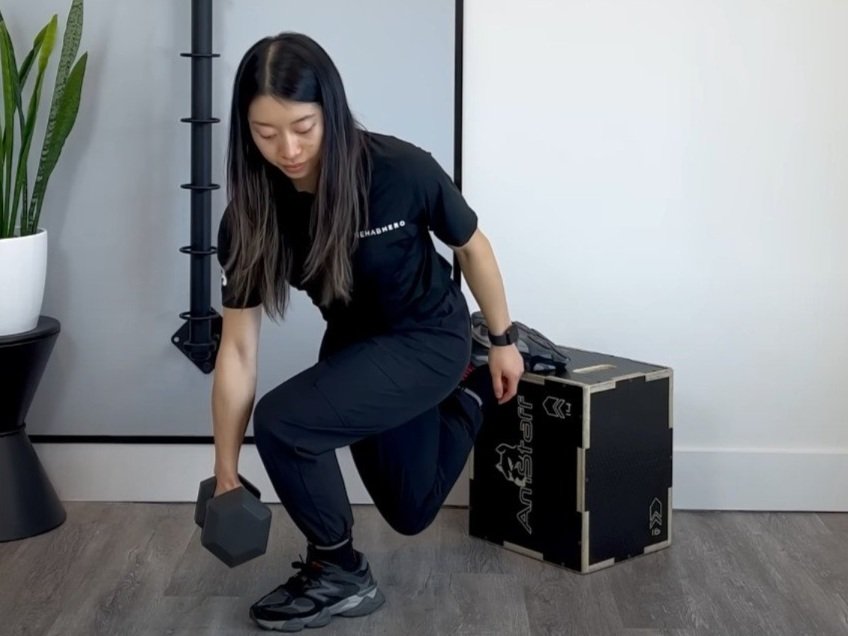Biceps Tendinopathy Review
Biceps Tendon Injury
What it is, why it happens, when does it occur, and what causes chronic pain
Anatomy of the Biceps
The biceps long head is the most frequently injured tissue of the two bicipital heads (1). The long head biceps tendon (LHBT) travels through the rotator interval (between supraspinatus and subscapularis) to attach to the superior labrum. The coracohumeral ligament and the superior glenohumeral ligament create a pulley system or ‘biceps sling’ which provide stability for the biceps tendon (1). Fibers from the subscapularis tendon and the supraspinatus tendons also contribute to formation of this pulley (2). Due to the intra-articular nature of the biceps tendon, pathology of this tendon can result in shoulder conditions such as SLAP lesions and subscapularis tears (1).
Biceps Tendinopathy Definition
Biceps tendinopathy is an umbrella term that incorporates biceps tendinosis (no inflammation and more common, degeneration from chronic overuse), biceps tendinitis (inflammation), tenosynovitis (inflammation in tendon sheath), and tendon rupture (Popeye sign). An overuse tendon injury should be referred to as a tendinopathy, and may have associated swelling, pain, and disability.
How Does It Get Injured?
Impingement of the LHBT can occur with mechanical entrapment of the tendon within the bicipital groove (1). This can be caused by degenerative changes (due to chronic tenosynovitis) in the groove or due to thickening of the tendon sheath (hourglass shape appearance - thickening of the proximal end). Impingement may also occur due to osteophytes or bone spurs on the anterior acromion or a thickened coracoacromial ligament. Impingement may also occur with scapular dyskinesis (aberrant scapular movement). Overuse injuries are usually accompanied by inflammation, and occurs with gliding of the LHBT on the humeral head.
LHBT instability is the leading cause of biceps tendinopathy. Subcoracoid impingement can also be a potential cause of degeneration of the biceps pulley (2). It is defined as impingement of the subcoracoid bursa and subscapularis tendon between the coracoid and lesser tuberosity. Narrowing of the coracohumeral interval has been shown to be related to LHBT and rotator cuff injuries (2). Once the LHB is unstable, degenerative changes within the tendon ensue, and most often occurs medially affecting the subscapularis tendon (2). This may lead to tendon subluxation (common and painful), or dislocation (pseudoparalysis)(2).
What Are Some Signs and Symptoms?
Signs and symptoms include anterior shoulder pain, bicipital groove pain, pain with locking (tendon entrapment within the groove), and increased pain with elbow flexion activities, shoulder fatigability, and other rotator cuff tears or shoulder impingement/ pathology (1)(2)(3). Associated motions are related to reaching to the backseat of a car, tucking in pants, or fastening of a bra (4). Pain may also occur with prolonged rest, immobility, and at night (waking pain)(1)(4). Pain is felt during a throwing motion during follow-through and an audible snap may be heard as the tendon subluxes in the groove (1). Special tests such as Speed’s test, Yergason’s test, and O’Brien tests will likely be positive (4).
What Causes Chronic Pain?
Chronic pain is thought to be produced by either neurogenic inflammation, central pain sensitization, excitatory nerve augmentation, inhibitory nerve loss, or dysregulation of supraspinal structures (3).
If you are experiencing chronic or acute biceps pain it is important to get it assessed by a health care practitioner. Clinicians such as a physiotherapist or chiropractor are able to diagnose this condition without any doctor referral needed. Paramedical healthcare providers such as massage therapists or osteopathic manual practitioners can help in the recovery process as an adjunct treatment.
What Are Some Treatment Options?
Both chiropractic and physiotherapy can be used to treat biceps tendinopathy. Both options often offer an array of treatment modalities including myofascial release, sport massage, and acupuncture. Biceps tendinopathy exercises may also be prescribed depending on your stage of healing. Massage therapy is often an adjunct therapy that can help with the recovery of your biceps tendon through deep tissue massage.
References
1. Dressendorfer R, Granado M. Biceps Tendinopathy. CINAHL Rehabilitation Guide [serial on the Internet]. (2017, Jan 20), [cited November 8, 2017]; Available from: Rehabilitation Reference Center.
2. Wilk K, Hooks T. The Painful Long Head of the Biceps Brachii: Nonoperative Treatment Approaches. Clinics In Sports Medicine [serial on the Internet]. (2016, Jan), [cited November 8, 2017]; 35(1): 75-92. Available from: MEDLINE with Full Text.
3. Raney E, Thankam F, Dilisio M, Agrawal D. Pain and the pathogenesis of biceps tendinopathy. American Journal Of Translational Research [serial on the Internet]. (2017, June 15), [cited November 8, 2017]; 9(6): 2668-2683. Available from: MEDLINE with Full Text.
4. Carr R, Shishani Y, Gobezie R. How Accurate Are We in Detecting Biceps Tendinopathy?. Clinics In Sports Medicine [serial on the Internet]. (2016, Jan 1), [cited November 8, 2017]; 35(Proximal Biceps): 47-55. Available from: ScienceDirect.


















